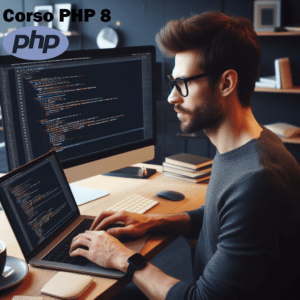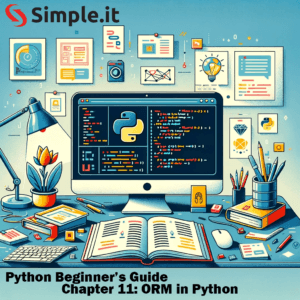PHP OOP
1. Introduction to PHP Object-Oriented Programming (OOP)
PHP 8 Free Course. Object-Oriented Programming (OOP) is a programming paradigm based on the concept of “objects”, which encapsulate data and behavior related to specific entities. These objects can interact with one another, making OOP a powerful tool for modeling complex systems. The core principles of OOP are classes, objects, inheritance, encapsulation, and polymorphism. By following the OOP paradigm, you can structure your programs in a way that is modular, reusable, and easier to maintain and understand.
1.1 Main Principles of PHP OOP
- Classes and Objects:
- Classes: Blueprints that define the properties (attributes) and methods (functions) shared by objects.
- Objects: Instances of classes, each with unique values for the properties defined by the class.
- Inheritance:
- Enables a class to use methods and properties of another class, promoting code reuse and the creation of hierarchical relationships.
- Encapsulation:
- Groups related data and behavior into a single unit (an object), and controls the access to the data, enhancing security and ease of maintenance.
- Polymorphism:
- Allows methods to do different things based on the object it is acting upon, making the system more modular and extensible.
1.2 Benefits of Using PHP OOP
- Modularity: OOP promotes a modular approach, where each class has a specific task. This modularity makes the code easier to manage and debug.
- Reusability: Classes created for one program can often be reused in another, saving time and resources.
- Maintainability: With a well-structured OOP system, making changes or fixing bugs in one part of the code is less likely to create issues elsewhere.
- Clear, Understandable Code: The organization of code into classes and objects often mirrors the real world, making the code easier to understand.
- Scalability: OOP makes it easier to manage and scale complex programs, as new objects can be created with little or no modification to existing code.
With this foundational understanding of OOP, we’ll delve into creating classes and objects in PHP, exploring inheritance, encapsulation, and polymorphism in the following sections of this lesson.
2. Classes and Objects
- Creating a Class:
class Car {
public $color; // Property
// Method
public function setColor($color) {
$this->color = $color;
}
}In this snippet, a class named Car is defined, with a property $color and a method setColor() to set the car’s color.
- Creating an Object:
$myCar = new Car(); // Creating an object of class Car
$myCar->setColor("red"); // Calling method to set color3. Inheritance and Polymorphism
- Creating a Subclass:
class ElectricCar extends Car {
public $range; // Additional property
// Additional method
public function setRange($range) {
$this->range = $range;
}
}ElectricCar is a subclass of Car, inheriting its properties and methods while adding its own.
4. Namespaces and Autoloading
- Defining a Namespace:
namespace Vehicles;
class Car {
// Class code...
}- Autoloading Classes:
spl_autoload_register(function ($class_name) {
include $class_name . '.php';
});
$car = new Vehicles\Car(); // Autoloading the Car class5. Exercises
- Class Creation:
- Create a class named
Animalwith properties for name and type, and a method to make a sound.
- Object Manipulation:
- Create an object of the
Animalclass, set its properties, and call its method to make a sound.
- Inheritance:
- Extend the
Animalclass to create aDogclass that overrides the method to make a sound specific to dogs.
6. Further Reading
For a deeper dive into Object-Oriented Programming in PHP:
- Explore the official PHP manual on OOP.
- Check out PHP OOP tutorials on W3Schools.
- Visit TutorialsPoint for PHP OOP concepts.
Ready to continue? Embark on Lesson 6: Error and Exception Handling to learn about managing errors effectively in PHP. And as always, for a recap of previous lessons or to navigate through the course, visit the PHP 8 Free Course index.




Pingback: PHP 8 Free Course - Lesson 6: Exception and Error Handling - Simple IT
Pingback: PHP 8 Free Course Index - Simple IT